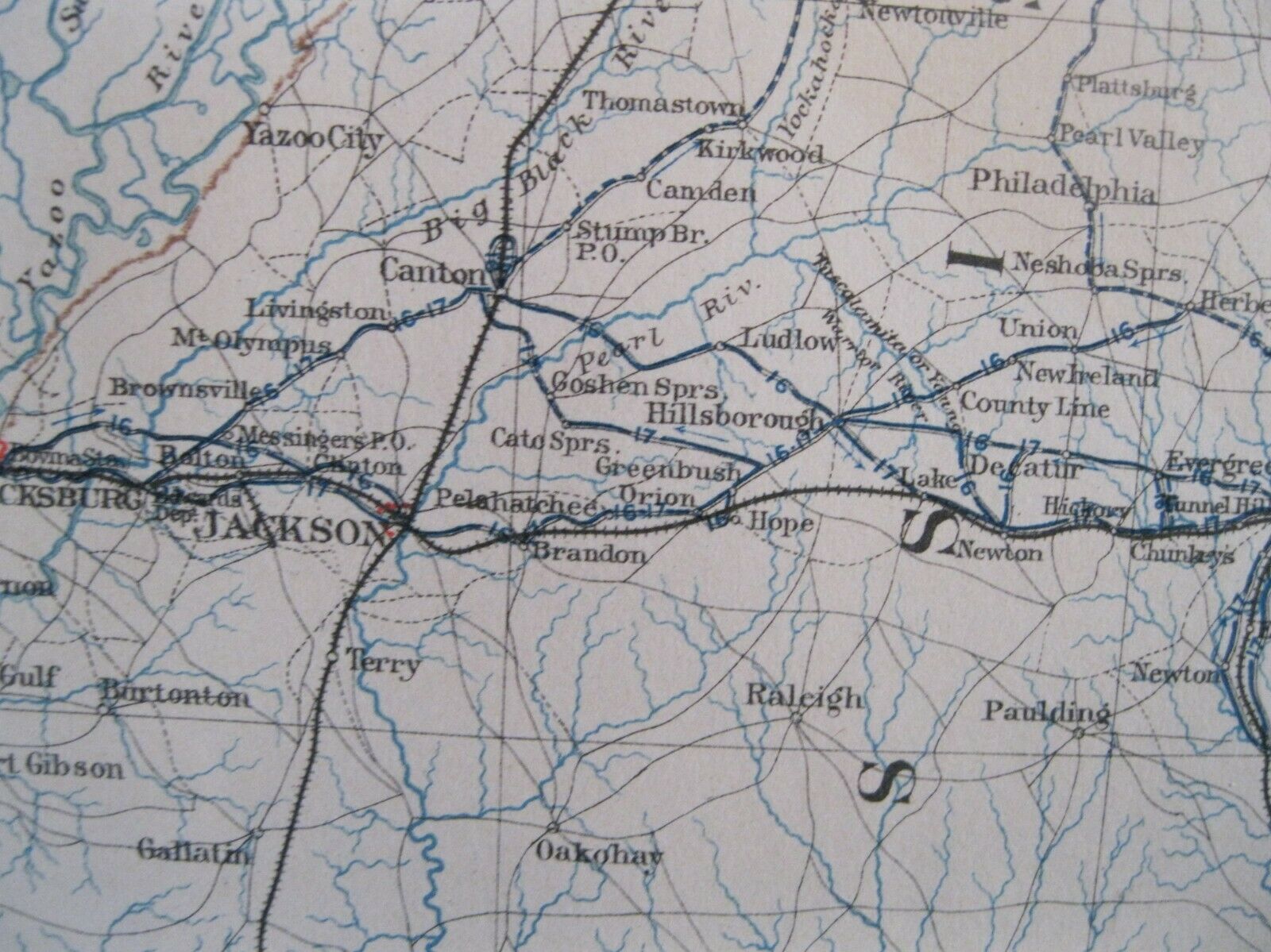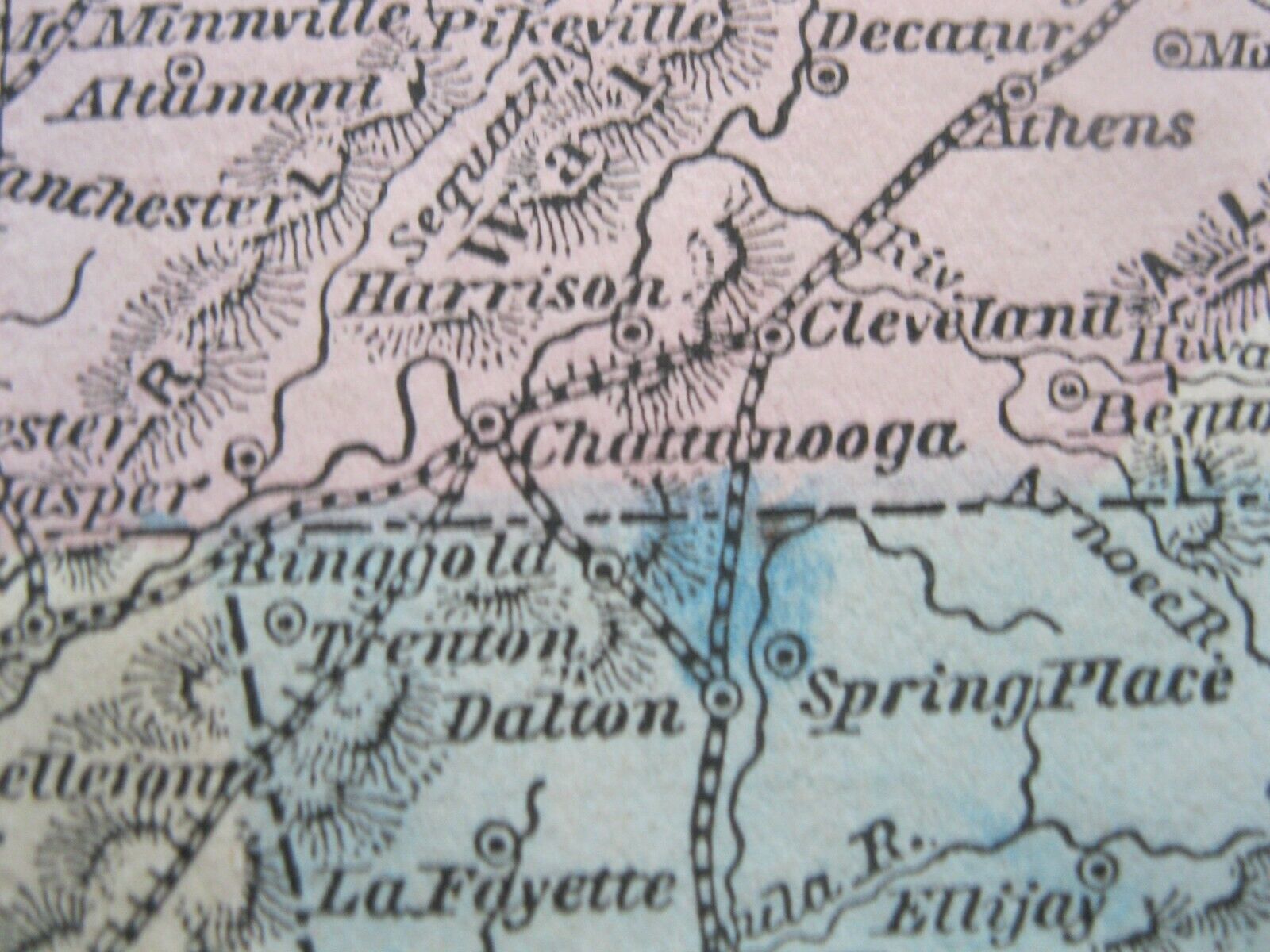-40%
Civil War Era Maps:1864 The South&Large Antique Map of Sherman's Marches 1863-65
$ 47.52
- Description
- Size Guide
Description
This great offer consist of twoOriginal Civil War Era Maps
the 1st is:
The Military Map
of the
Marches of the United States Forces
Under the command of
Maj. Gen. W.T Sherman
during the years
1863, 1864, 1865
An impressive conversation piece for any wall.
This large map measures 29.5" wide and 18.5" tall.
It is an Original lithograph military map Plate CXVII (117) from
"The Atlas to Accompany the Official Records of the Union and Confederate Armies"
Commissioned by Resolution of Congress May 19, 1864,
in accordance to serve as the official historical record of the Civil War.
The Atlas from which this plate was taken was never publicly sold but exclusively distributed to federal depositories, universities, museums and various public institutions until they were withdrawn from these institutions and entered the public domain years later.
The atlas still remains the definitive source of Civil War information available.
It was published between 1891 and 1895
The most famous, or infamous depending where you live,
was Sherman’s “March to the Sea”
Atlanta to Savannah
from
November 15th to December 21st, 1864
William Tecumseh Sherman is acknowledged by many historians as the first modern general.
Now a days he might be said to have fought in an asymmetrical manner. He hated war (and politics) coined the phrase, "War is hell", but when war started it should be made as terrible as possible so it would end as quickly as possible. When he started his march on Nov. 15th he entered behind Confederate lines with limited supplies. His idea was travel light and fast and live off the land and “forage liberally”; this included stealing crops, livestock, clothing and medicine from civilians and prisoners. His raiding strategy included destroying fields, tearing up railroad tracks (railroad ties were heated and bent around trees rendering them useless and know as "Sherman's Bowties"). The strategy included intimidating civilians and freeing slaves to demoralize the population mostly composed of women as most of the men were off fighting the war. This he hoped would put pressure on the men when they learned what was happening to leave the ranks and return home to protect their families.
The fall of Atlanta in September, it has been said, guaranteed President Lincoln's victory in the 1864 presidential elections. While campaigning across Georgia deep in Confederate territory little information reached the president as to what was happening. Some historians reported that Lincoln received some information by getting copies of the local southern newspapers. When the army took Savannah on December 22nd, Sherman wired Lincoln, “I beg to present you, as a Christmas gift, the city of Savannah, with 150 heavy guns and plenty of ammunition, and also about 25,000 bales of cotton.”
****
The 2nd map is an
Original 1864
Civil War Era Map
of the
Central Southern States
Mississippi, Alabama & Georgia
This map measures 11.0" wide and 8.9" tall.
Showing the railroads used during the various military campaigns waged in
the south central Confederate states with an insert of Mobile and Mobile Bay.
Battle of Mobile Bay,
On August 5, 1864, at the Battle of Mobile Bay, Union Admiral David Farragut led his flotilla through the Confederate defenses at Mobile, Alabama, to seal one of the last major Southern ports. Opposing Admiral David Farragut’s force of 18 warships was a Confederate squadron of only four ships; however, it included the CSS Tennessee, said to be the most powerful ironclad afloat. Farragut also had to contend with two powerful Confederate batteries inside of forts Morgan and Gaines. The fall of Mobile Bay was a major blow to the Confederacy, and the victory was the first in a series of Yankee successes that helped secure the re-election of President Abraham Lincoln later that year.
(also see detailed informational maps of the Battle of Mobile Bay)
These maps are
a great addition to any collection of
Antiques
Maps
Civil War History
or
Research




















